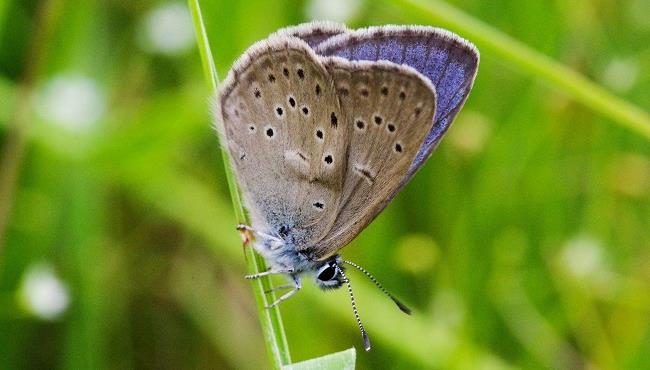In the past five years, the number of butterflies in the large herbivore reserve in the former military training area of Milovice near Prague, Czech Republic, has grown significantly.

While carrying out regular monitoring, scientists have found out that the number of butterflies has increased from 4,592 in 2016 to 12,506 in 2021. That means an increase by 172 percent. The numbers of the rarest butterfly, the mountain Alcon blue, have reportedly grown by 1,700 percent.
“The grazing of large ungulates clearly has a positive effect on butterflies. The transformation of the location and the increase in the number of butterflies over the last few years is so clear to see that even a layman must have noticed it. The number of butterflies is visibly greater than it was at the time when the pasture was opened,” says entomologist, David Ricl.
The populations of protected species are said to be growing. “This includes the mountain Alcon blue. They are not only growing in numbers, but also appearing in places where just a few years ago you wouldn’t have seen them,” Ricl says.
While in 2016 scientists recorded a mere five individuals in four mapped locations, and the species was teetering on the brink of extinction there, this year more than 90 have been observed in 14 locations. That means a remarkable increase of 1,700 percent.
“Thanks to the pasture and the suppression of aggressive grass species, the population of the endangered star gentian flower has been revived, and is beginning to prosper in parts of the reserve that used to be overgrown. This goes hand in hand with the expansion and strengthening of the mountain Alcon blue population,” Ricl adds.
The star gentian is one of the plant species on which females of the mountain Alcon blue can lay eggs.
Other species are also thriving. The red-underwing skipper or the meleager’s blue are also enjoying a resurgence in the area. More common butterfly species are thriving in large ungulate pastures as well.
“One example is the chalkhill blue, which is found in the large ungulate reserve by the thousand,” David Ricl mentions.
In the monitored location, its numbers have grown from 55 individuals in 2016 to 493 in 2021. The research lasted five years, and its results have been published in the scientific journal BMC Ecology and Evolution.
The significant growth in butterfly numbers confirms that grazing large ungulates is an ideal way to take care of large areas of countryside.
“We launched our project years ago precisely because butterfly species were dying out. We are glad that scientific research has confirmed that large ungulates can create an ideal environment for butterflies, and what’s more, on hundreds of hectares,” remarks Dalibor Dostal, director of the European Wildlife conservation organisation.
According to scientists, butterflies are a good indicator of the overall condition of an ecosystem because they have complex life cycles. Their individual stages of development require diverse microhabitats.
“Butterflies not only need species-rich meadows, where adults can suck the nectar of various herbs. Meadows also have to provide them with places without vegetation, where caterpillars can bask in the sun. Protected places in the shade of woody plants, where caterpillars can pupate, or numerous ants’ nests, where many butterfly species undergo a part of their development,” says Miloslav Jirku from the Biology Centre of the Czech Academy of Sciences.
In addition, these different environments must be close together as caterpillars are not able to cover more than a few metres while searching for them. Butterflies therefore need meadow ecosystems which are diverse not only in plants but also in microhabitats.
The reserve for large ungulates was established in the former military area in 2015. It is maintained by the grazing of herds of wild horses, originating from Exmoor, England, European bison and bred-back aurochs. It currently extends in an area of 350 hectares.
